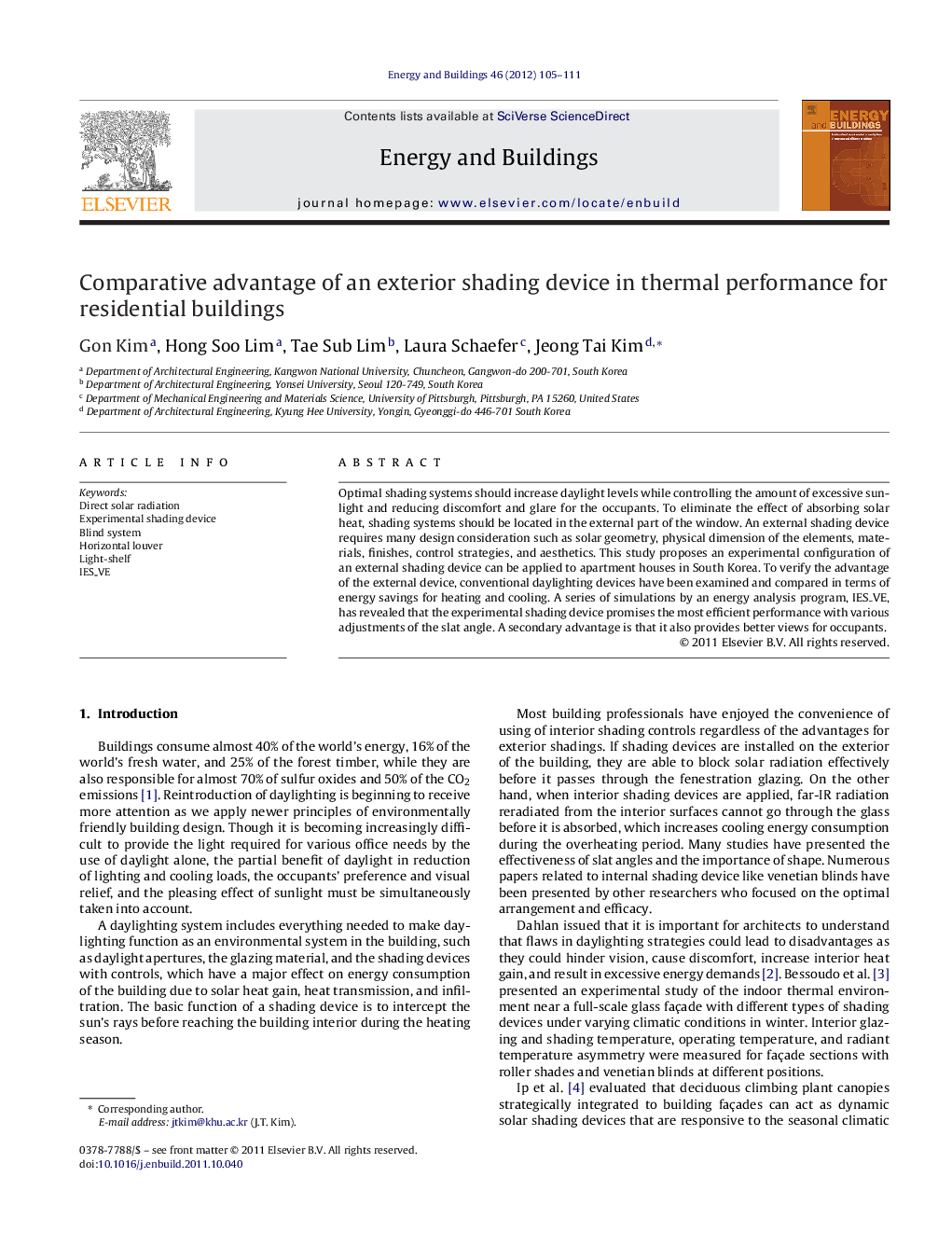| Article ID | Journal | Published Year | Pages | File Type |
|---|---|---|---|---|
| 6734969 | Energy and Buildings | 2012 | 7 Pages |
Abstract
Optimal shading systems should increase daylight levels while controlling the amount of excessive sunlight and reducing discomfort and glare for the occupants. To eliminate the effect of absorbing solar heat, shading systems should be located in the external part of the window. An external shading device requires many design consideration such as solar geometry, physical dimension of the elements, materials, finishes, control strategies, and aesthetics. This study proposes an experimental configuration of an external shading device can be applied to apartment houses in South Korea. To verify the advantage of the external device, conventional daylighting devices have been examined and compared in terms of energy savings for heating and cooling. A series of simulations by an energy analysis program, IES_VE, has revealed that the experimental shading device promises the most efficient performance with various adjustments of the slat angle. A secondary advantage is that it also provides better views for occupants.
Keywords
Related Topics
Physical Sciences and Engineering
Energy
Renewable Energy, Sustainability and the Environment
Authors
Gon Kim, Hong Soo Lim, Tae Sub Lim, Laura Schaefer, Jeong Tai Kim,
